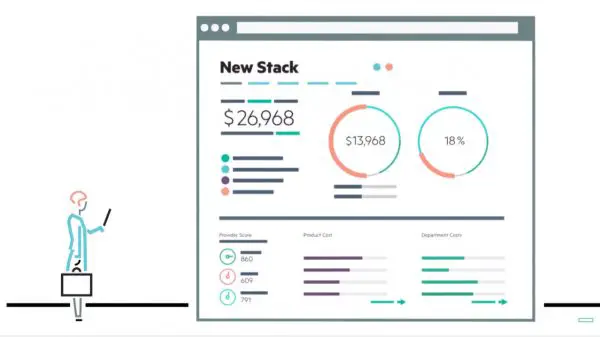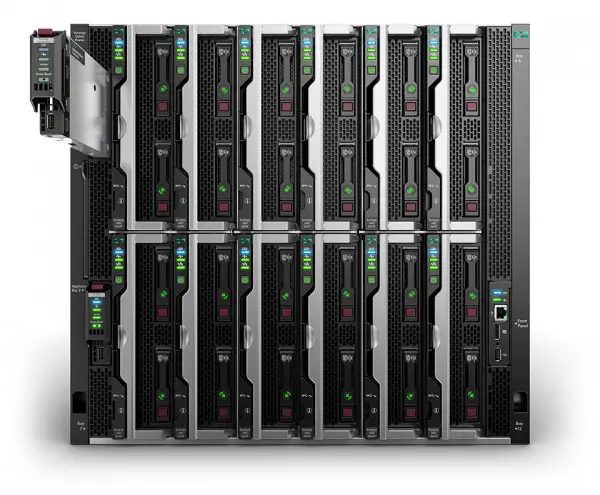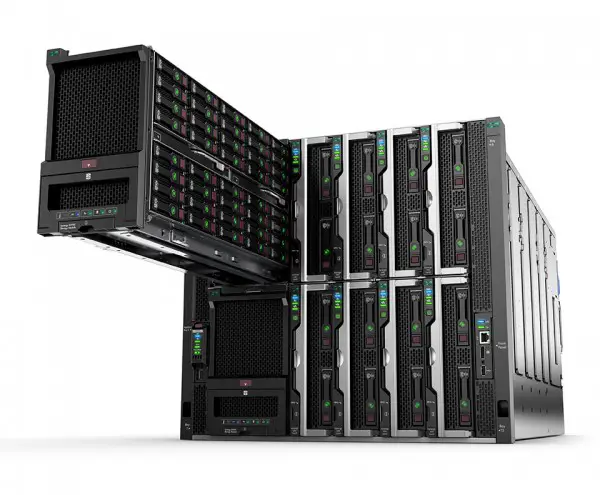One of the most interesting announcements this week at HPE Discover was a project called New Stack. The project is a technology preview that HPE is ramping up with beta customers later this year, but the intentions of the project are to integrate the capabilities of all the “citizens” it manages to provide IT with cloud-like capabilities based on HPE platforms and marry that with the ability to orchestrate and service multiple-cloud offerings. That’s a mouthful, I know – so lets dig in.

If you assess the current HPE landscape of its infrastructure offerings, it has been building a management layer utilizing its HPE OneView software layer and its native API’s to allow for a full software-definition of its hardware. Based on OneView, HPE has created hyperconverged offerings and its HPE Synergy offerings building additional capabilities on top of OneView. With the converged offerings, the deployment times are reduced and the long term management has been improved with proprietary software.
With the HyperConverged offerings, HPE calls it VM Vending – meaning its a quick way to create VM workloads for traditional application stacks easily. It does not natively assist with cloud-native types of workloads. Certainly, you can deploy VM and VMware solutions to assist with OpenStack and Docker. Synergy improves upon the hyperconverged story by including the Image Streamer capability to allow native stateless system deployment and flexibility, in addition to the traditional workloads. Synergy is billed as a bimodal infrastructure solution that enables customers to do cloud-native and traditional workloads, side-by-side.
The Gap
And then there is a gap. The gap is the required orchestration layers to enable cloud-like operations in on-premises IT solutions. HPE has a package called CloudSystem, which also existed as a productized converged solution, that include this orchestration layer to enable cloud-like . The primary problem with CloudSystem is cost. Its expensive – personal experience. Its also cumbersome. CloudSystem pieced together multiple different software packages that already existed in HPE – including some old dial-up billing software that morphed into cloud billing. CloudSystem was clearly targeted towards service providers.
The reality is today that regular IT needs to transform and be able to operate with cloud methodologies. It needs to be able to offer a service catalog to its user – whether developers, practitioners, or business folks ordering services for their organization. Project New Stack is planned to allow this cloud operation and orchestration across on-premises and multiple clouds.
Enter Project New Stack
New Stack is entirely new development for the company, based around HPE’s Grommet technology and integrating technology from CloudCruiser, which it acquired in January of 2017. CloudCruiser provides cost analysis software for cloud and so that provides a big part of what has been shown for Project New Stack during Discover. CloudCruiser focused on public cloud, so HPE has had to do some development around costing for on-premises infrastructure. It attempts to give a cost and utilization percentages across all your deployment endpoints.
Project New Stack taps into the orchestration capabilities of Synergy and its hyperconverged solutions to assist with pivoting resources into new use cases on-premises. It uses those resources to backend the services offered in a comprehensive service catalog. Those services are offered across a range of infrastructure, on-site and remote. Administrators should be able to pick and choose service offerings and map them from a cloud vendor to their users for consumption, but this is not the only method of consumption.
Talking with HPE folks on the show floor, they don’t see Project New Stack as the interface that everyone in an organization will always use. Developers can still interact with AWS and Azure from directly within their development tools, but Project New Stack should take any of those service spun-up or consumed and report them, aggregate them and allow the business to manage them. It doesn’t hamper other avenues of consumption and explains the focus on cost analysis and management for the new tool.
Orchestration is only part of the story. New Stack should gives line of business owners the ability to get insights from their consumption and make better decisions about where to deploy and run their apps. Marrying it with a service catalog gives a new dimension of decision making ability, based around cost. As with all costing engines, the details will make or break the entire operation. Every customer gets varying discounts and pricing from Azure and AWS. How those price breaks translate into the cost models will really dictate whether or not the tool is useful.
The ability to present a full service catalog shouldn’t be diminished. It is a huge feature – enabling instantiation of services in the same way, no matter where the backend cloud or on-premises. On-premises is new territory for most enterprises with cloud services. Enterprise is slow to change, but if the cloud cliff is real, more companies will face making the decision and brining those cloud-native services back on-premises for some use cases.
What I do not hear HPE talking about is migration of services from one cloud to another. While it may be included, this is typically the achilles heal for most cloud discussions. This is easier to accomplish with micro-services and new stack development than with traditional workloads. Bandwidth constraints and incompatibilities between clouds still exist for traditional workloads. And I didn’t get far enough into the system on the show floor to see how an enterprise could leverage the system to deploy their own cloud-native code, or simply draw insights from the cloud-native code deployed.
Final Impressions
Project New Stack was the most interesting thing that I saw HPE Discover this week. While HPE has been developing software defined capabilities for its infrastructure, what has been lacking is an interface to integrate it all together. OneView is a great infrastructure-focused product made for defining and controlling the full on-premises infrastructure stack. Its incredibly important to allowing cloud-like operations on-premises. In the early forms, it won’t tie everything up in a nice little package, but it is early and that’s intention on HPE’s park to get the product out and into the hands of customers and then refine.


